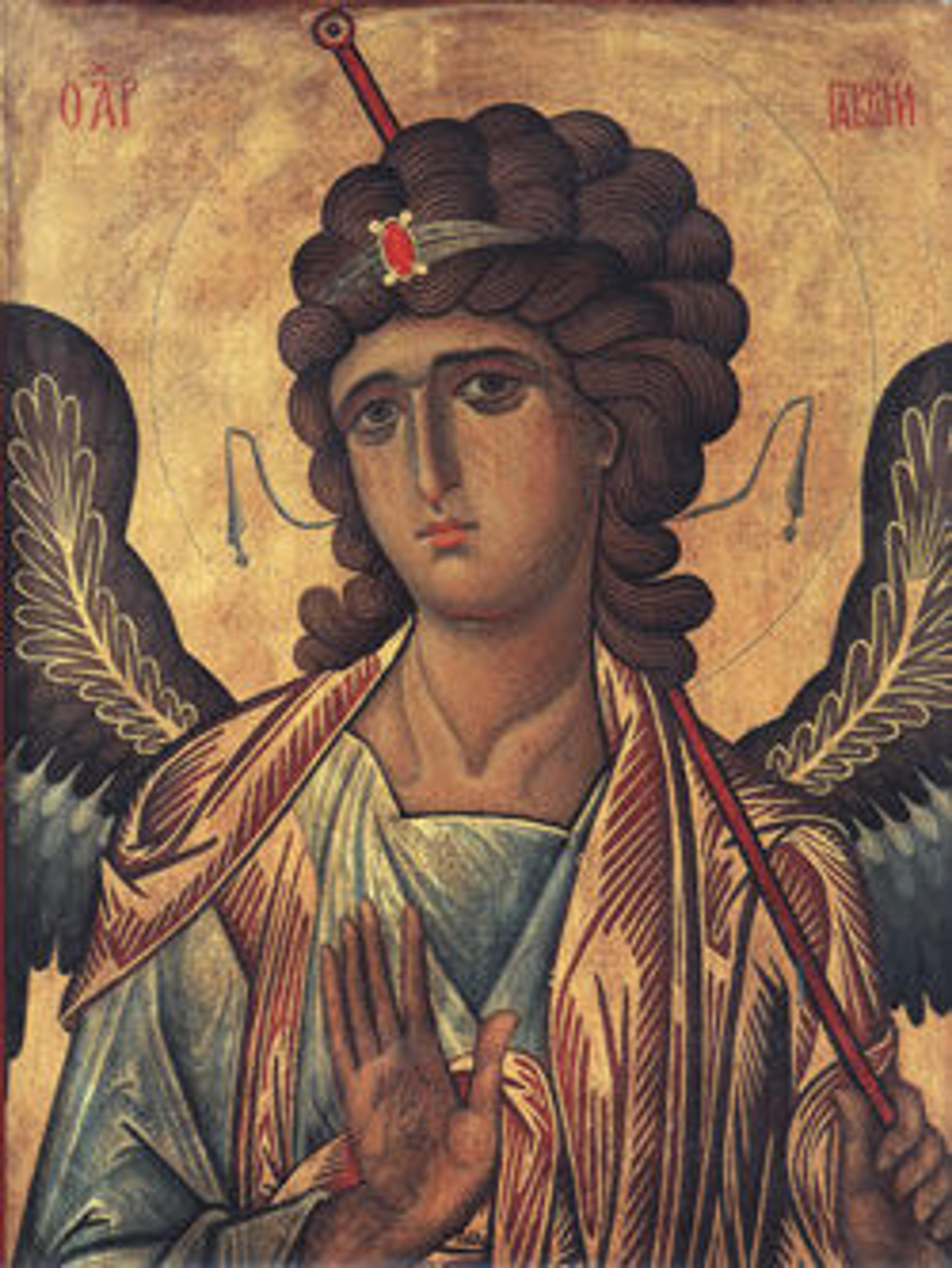Mäsqälä qǝddase (liturgical cross)
This cross was created in the northern Highlands, near the Red Sea, the birthplace of Ethiopia's earliest kingdom and of Christianity in Africa. A small corpus of Ethiopian Christian works from before the seventeenth century has survived.
This exceptional creation, in which a highly unusual interplay of materials affords rich tonal contrasts, is a tour de force. The solidity of the carved-wood structure is permeated by finely applied metal inlays. The complexity of this work, with each side elaborately distinct, is unrivaled. It has been attributed to Ezra (ca. 1460-1522), a member of the Stephanite monastic order. The Stephanites came to be recognized as the foremost carvers of crosses and illuminators of manuscripts. During a period of the order's exile in Egypt, Ezra is reputed to have enhanced his training as a craftsman and learned the technique of marquetry. It has been suggested that he may have produced this work at the Gunda Gunde monastery, renowned for its manuscripts.
In the Ethiopian church, the wooden cross is perceived as having been sanctified by Christ's blood, which conferred upon it infinite power to heal and to bless. Foliate and organic interlace designs, branching from the foot of the cross, are interpreted as symbolizing the Tree of Paradise, and thus a vibrant life-giving force. Commissioned by Ethiopian royalty, such works were presented to important monasteries to be carried in liturgical processions.
This exceptional creation, in which a highly unusual interplay of materials affords rich tonal contrasts, is a tour de force. The solidity of the carved-wood structure is permeated by finely applied metal inlays. The complexity of this work, with each side elaborately distinct, is unrivaled. It has been attributed to Ezra (ca. 1460-1522), a member of the Stephanite monastic order. The Stephanites came to be recognized as the foremost carvers of crosses and illuminators of manuscripts. During a period of the order's exile in Egypt, Ezra is reputed to have enhanced his training as a craftsman and learned the technique of marquetry. It has been suggested that he may have produced this work at the Gunda Gunde monastery, renowned for its manuscripts.
In the Ethiopian church, the wooden cross is perceived as having been sanctified by Christ's blood, which conferred upon it infinite power to heal and to bless. Foliate and organic interlace designs, branching from the foot of the cross, are interpreted as symbolizing the Tree of Paradise, and thus a vibrant life-giving force. Commissioned by Ethiopian royalty, such works were presented to important monasteries to be carried in liturgical processions.
Artwork Details
- Title:Mäsqälä qǝddase (liturgical cross)
- Artist:Ezra (ca. 1460–1522, northern Highlands, Ethiopia)
- Date:ca. 1500
- Geography:Ethiopia, Highlands region, Tigray
- Medium:Wood, tin
- Dimensions:H. 18 × W. 8 3/4 × D. 1 3/4 in. (45.7 × 22.2 × 4.4 cm)
- Classification:Wood-Sculpture
- Credit Line:Rogers Fund, 1999
- Object Number:1999.103
- Curatorial Department: The Michael C. Rockefeller Wing
More Artwork
Research Resources
The Met provides unparalleled resources for research and welcomes an international community of students and scholars. The Met's Open Access API is where creators and researchers can connect to the The Met collection. Open Access data and public domain images are available for unrestricted commercial and noncommercial use without permission or fee.
To request images under copyright and other restrictions, please use this Image Request form.
Feedback
We continue to research and examine historical and cultural context for objects in The Met collection. If you have comments or questions about this object record, please contact us using the form below. The Museum looks forward to receiving your comments.
